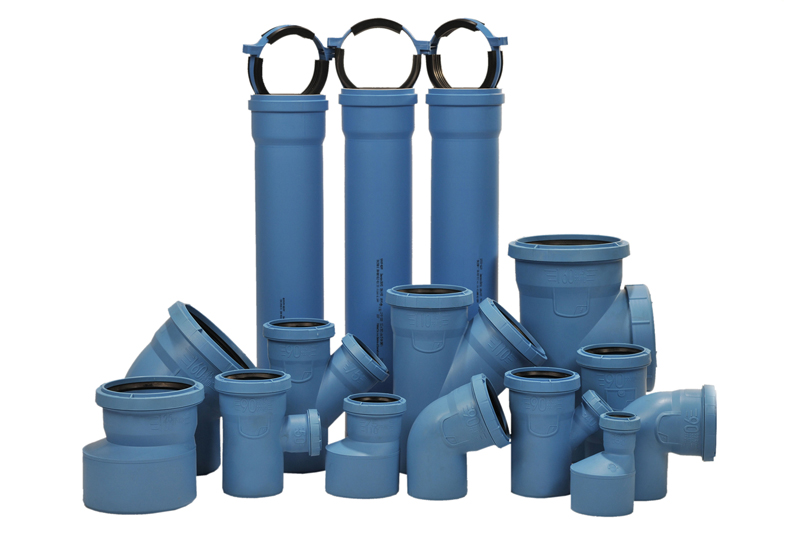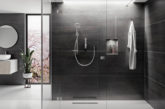
David Barker, Soil & Waste Category Manager at Marley Plumbing & Drainage, explores the importance of choosing drainage systems with high-quality acoustic performance for multiple-occupancy buildings.
The topic of acoustics is currently a big discussion within the construction industry, with clients often placing more of a focus on the acoustic properties of a building and the quiet space it can provide. While the emphasis tends to land on insulation, a well-considered drainage system can also have just as much of a positive effect on acoustics. Consequently, when it comes to recommending drainage systems to your clients, it’s vital to consider a high-quality acoustic system.
Bathrooms can be noisy places: gurgling pipes, the audible sounds of toilets flushing, and the sounds of water passing through the building. Although drainage systems are largely installed behind walls and beneath floors, clearly with the intention of the unsightly pipework being hidden from view, there are buildings being built where people are audibly all too aware of its presence – meaning that they can actually hear the passing of water and waste water.
As well as noise from a badly designed drainage system being irritating and unpleasant, a number of recent studies have shown the quite serious effects nuisance noise can have on our health and well-being.
For example, according to World Health Organisation (WHO) guidelines, unwelcome noise can be linked to various health issues, such as hearing impairments, cardiovascular issues, cognitive impairment and metabolic effects. In addition to physical health, noise can also affect our mental well-being, with a shocking 48% of British people surveyed saying that they feel their home is spoilt by noise – a sad statistic when you consider how home is meant to offer a secure and welcoming comfort.
What’s more, with the increased pressure placed on the UK housing market and the lack of available building space, more buildings of multiple occupancy, such as flats and apartments, are being constructed. With this type of construction, it is easy to see how multiple occupancy buildings can be affected by poorly designed drainage systems and acoustics, as they will have a far greater number of pipes installed within the walls and floors of habitable spaces.
That is not to say, however, that private domestic dwellings are unaffected by nuisance noise from drainage and pipework, as semi-detached and terraced houses can similarly be plagued by the sounds of water flushing through internal pipes and unwelcome noises from adjoining neighbour’s bathrooms.
Natural selection
Deciding which type of pipes to install has long been a key issue within the construction industry. However, it is crucial that installers select a soil and waste system with the appropriate acoustic performance to minimise both air-borne and structure-borne sound within soil and waste pipes.
When it comes to acoustic drainage systems, it is recommended that a layered plastic drainage pipe is used. Each of the pipe layers has an individual function: the inner skin is resistant to high temperatures (up to 95°C short term), while the central layer provides structural strength and noise reduction capabilities, and the outer layer provides exceptional impact resistance and protection against severe weather conditions. This layered construction absorbs sound waves and reflects them inwards, significantly reducing the transmission of noise to a building’s occupants.
One of the available acoustic systems is Marley Plumbing & Drainage’s dBlue. It consists of a triple layered pipe, which provides efficient removal of wastewater, while reducing structure-borne sound and acoustic vibrations to a level of 16dB* at 4l/s discharge rate. The noise generated by the flow of water is also dramatically reduced, providing residents of multi-occupancy buildings, hospital patients or hotel guests with a peaceful and quiet environment.
The dBlue system also features a Phonoklip bracket. This acoustic body bracket encompasses a unique body section, which absorbs noise generated from pipework into the building structure and was designed within the Aliaxis R&D laboratory. The system is also lightweight, resistant to temperature change and is jointed using the push-fit ring seal method.
In addition to ensuring that the correct drainage systems have been chosen, it is also vital that the system is designed and installed in a manner that will further aid sound reduction. While this may seem like a daunting task, it doesn’t have to be. Working with a reputable manufacturer, with a highly knowledgeable technical team, will help you deliver a high-quality installation that meets your client’s expectations.












